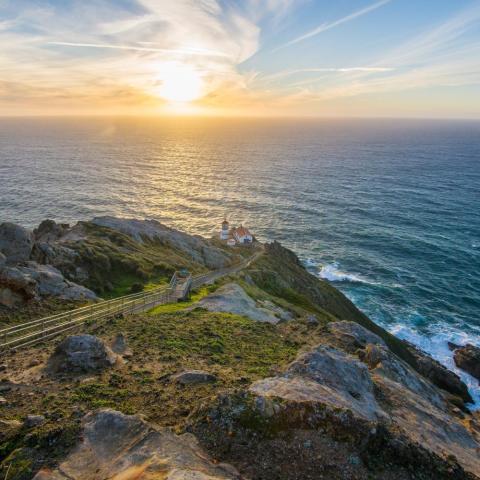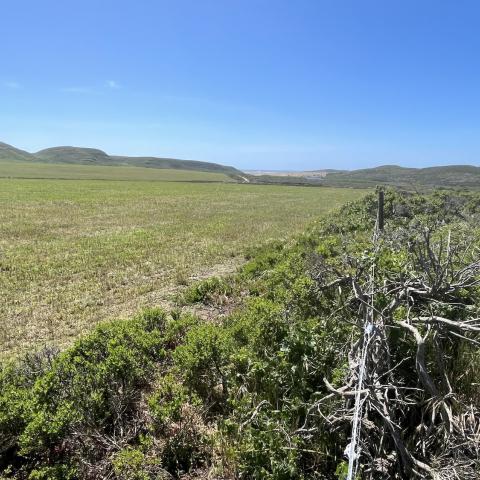Work is getting underway this week at Point Reyes National Seashore in California to remove an estimated 500 tons of debris from Drakes Estero, which is part of the Phillip Burton Wilderness in the park.
Some of the debris is left over from the long oyster farming history of the 2,500-acre estero. That chapter at the seashore closed in 2014, two years after the Interior Department declined to renew the lease of Drakes Bay Oyster Co.
When Drakes Bay bought out the farm's previous owners in 2005, the existing lease for the operation ran through November 2012. While Kevin Lunny had been optimistic he could obtain a lease renewal from the National Park Service, then-Interior Secretary Salazar declined that request in November 2012, saying Congress long had intended for Drakes Estero where the oyster farm was based to become part of the Philip Burton Wilderness.
As soon as Mr. Salazar rendered his decision, the National Park Service officially designated the estero as wilderness, something envisioned when the Point Reyes National Seashore Wilderness Act was passed in 1976. The wilderness legislation that set aside 25,370 acres of the national seashore as wilderness cited another 8,003 acres encompassing the estero that would be "essentially managed as wilderness, to the extent possible, with efforts to steadily continue to remove all obstacles to the eventual conversion of these lands and waters to wilderness status" -- and the oyster operation was seen as being incompatible with such a designation.
This week Seashore officials said workers would begin removing an estimated 500 tons of marine debris, and extract and dispose of 5 miles of dock-like wooden racks, and clean several acres of plastic and other man-made debris on the estero floor and sandbars.
Drakes Estero, one of only two marine wilderness areas within the National Park System, is a haven for wildlife and a destination for kayakers and hikers seeking solitude at Point Reyes National Seashore.
The $4 million restoration is funded by the National Park Foundation and National Park Service. The park aims to complete the restoration by early 2017. The Drakes Estero restoration is among the signature projects around the nation celebrating the 100th anniversary of the National Park Service.
"Drakes Estero is spectacular," said Superintendent Cicely Muldoon. "The estero is an ecological treasure, and an extraordinary public resource. We are so grateful to the National Park Foundation for making this project possible. What a gift to visitors today, and for generations to come."
Drakes Estero lies in the heart of Point Reyes National Seashore, and is a state marine conservation area and a federally designated wilderness, making it one of the most protected estuaries on the Pacific Coast. Globally, thousands of species of birds, mammals, fish, and other wildlife depend on estuaries, where fresh water mixes with salty ocean water.
"The restoration of Drakes Estero will once again allow all the native species to thrive in this very special place. It is not often that we reclaim such an ecosystem for the seals, eelgrass, and shorebirds, and the National Park Foundation is proud to partner with the National Park Service to support this critical work," said Will Shafroth, president of the National Park Foundation. "Through these efforts, the Estero, the only marine wilderness in the lower 48 states, will be an amazing place for learning and recreation."
Eliminating oyster racks and other debris will benefit eelgrass habitat within this ecologically rich estuary, and will remove artificial substrate that supports non-native invasive species. Debris will also be removed from sand bars near harbor seal haul-out areas.
To ensure public safety and efficient operations, the access road and estuary will be temporarily closed on weekdays. Water access to the estero will remain open on weekends and holidays, when no work is underway. Trails surrounding Drakes Estero will remain open during the restoration.




 Support Essential Coverage of Essential Places
Support Essential Coverage of Essential Places







Comments
As reported in this article: "While Kevin Lunny had been optimistic he could obtain a lease renewal from the National Park Service, then-Interior Secretary Salazar declined that request in November 2012."
However, multiple records submitted to the Court tell an entirely different story: namely that Mr. Lunny knew of and was explicitly told of the NPS decision not to renew the lease years before the Salazar re-confirmed that decision and well BEFORE Mr. Lunny bought the oyster farm.
Mr. Lunny's escrow opened December 17, 2004 (Case 4:12-cv-06134-YGR Document 72-8). But Mr. Lunny stated to the court (AR #6, pg. 43) that "when we took over operations in 2005, it was AFTER working with the Coastal Commission staff early in or late in 2004 to understand the 2003 Cease and Desist order."
That Order (http://www.coastal.ca.gov/lega... states: "NPS has informed Staff that it cannot, under this [Wilderness Act] Act, extend or renew [the oyster] lease when it expires in 2012 because the estuary and surrounding [tide]land will convert to wilderness, and the continued operation of a commercial aquaculture facility is inconsistent with the wilderness designation."
So Mr. Lunny knew before he opened escrow in 2004 that NPS had decided that it could not renew the lease.
Further, on 1/23/2005, the Marin Independent Journal reported, "The deal is expected to close within a FEW WEEKS, according to Robert Lunny."
TWO DAYS later on 1/25/05, a letter from NPS to Mr. Lunny (Case 4:12-cv-06134-YGR Document 72-9) stated,
"As we have discussed, there is the issue of the potential wilderness designation...we've enclosed the Solicitor's memorandum for your reference. Before you close escrow on the purchase, we wanted to make sure you had a copy [which stated] "The Park Service is mandated by the Wilderness Act...to convert potential wilderness, i.e., the Johnson Oyster Company tract and the adjoining Estero, to wilderness status as soon as the non conforming use can be eliminated."
So this is the yet another time that documents show that Mr. Lunny knew about the Park Service decision not to renew before the escrow closed (i.e. before the sale was consummated).
Further, the July 14, 2006 Pacific Sun article reported from an interview with Mr. Lunny: "When Lunny took over the shellfish production lease in 2004...Lunny knew the lease was set to expire in 2012."
In sum, there is an abundance of records demonstrating that Mr. Lunny knew of the Park's decision not to renew the mariculture lease SEVERAL MONTHS before he bought the oyster operation or invested any money in it and EIGHT YEARS before Secretary Salazar's decision to re-confirm that NPS decision.
Mr. Lunny has persisted in asserting the false claim that NPS never told him about their decision until AFTER he bought the farm. The National Parks Traveler's sloppy reporting of the facts inadvertently promotes Mr. Lunny's falsehood.
Secretary Salazar 2012 decision to re-re-re-re-confirm a NPS decision made as early as 2003 and repeatedly re-re-re confirmed to Mr. Lunny both before and after he bought the oyster farm is not a story of NPS deceit....
Instead it is a story of Mr. Lunny's terrible business decision that flew in the face of the Wilderness Act and failed. Secretary Salazar's re-re-re-re-confirming the earlier NPS decision did not cause Mr. Lunny's failure, instead it concluded Mr. Lunny's hubris.
Gordon Bennett, President, Save Our Seashore